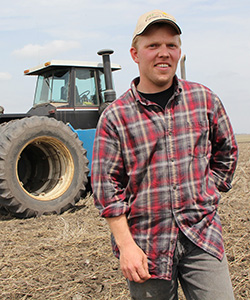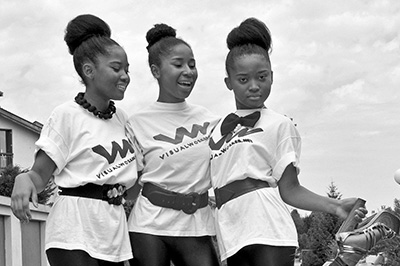
Missouri 4-H Positive Youth Development
Finding Youth Sparks

Everybody has a skill, a talent, an interest, or a special quality that they are passionate about. We call these things SPARKS. They provide joy, purpose, and direction. Sparks are self-discovered and self-identified. They come from deep within and provide energy, joy, purpose, and direction in one's life. Examples of sparks include:
- Music, art, and sports (skill or talent)
- Vintage films, cars, or fishing (an interest)
- Social justice, environmental advocacy, pet adoption (passionate commitment)
- Empathy, intelligence, spirituality (a special quality)
Developmental relationships

4-H relationships are about trust, mutual warmth, and respect. 4-H adults are safe and they are here to help. When youth and adults do 4-H work together and everyone grows from the experience, it is a developmental relationship.
Qualities of a developmental relationship:
- Secure attachment between youth and adult.
The relationship has mutual warmth, respect, and trust. - Bidirectional relationship.
Youth and adult engage together in their 4-H work, with both gaining from the experience. - Grows over time to address changing needs.
As their world grows more complex, so do the skills youth need to navigate it. - Shifts power over time.
Developmental relationships eventually move from adult-driven to a partnership, reflecting the young person's "increasing competence, personal autonomy, decision making, and identity formation"
Listening • Dependability • Accountability • Reflection • Empowering • Advocating
Quality programs

4-H programs are structured to make a positive difference in the lives of youth through high program quality.
- Youth are safe at 4-H events, secure in knowing their ideas matter and that they belong.
- Youth work in an environment they can trust to be positive and supportive, where they are encouraged to persevere when adversity arises.
- These 4-H environments are structured for youth to believe in their abilities as they build new skills.
- 4-H is a place where a young person's family, school, and community can all come together.
How do we know youth are thriving? Five indicators:

4-H relationships are about trust, mutual warmth, and respect. 4-H adults are safe and they are here to help. When youth and adults do 4-H work together and everyone grows from the experience, it is a developmental relationship. Thriving occurs when youth are growing from their 4-H experience, and using that experience to help the world around them. Thriving occurs when youth are actively pursuing their sparks, supported by their environments (such as a 4-H program) and in developmental relationships that encourage this pursuit.
An openness to challenge & discovery: They enjoy a challenge, and like to explore new things!
A hopeful purpose They have a sense of purpose in life, and optimism for future.
Positive emotionality They are generally positive and optimistic, and can manage their emotions.
A pro-social orientation They are respectful, honest, responsible, caring, and value helping others.
Intentional self-regulation: They set goals and create effective strategies to achieve them.
They persevere, making adjustments when necessary to achieve their goals.
4-H developmental outcomes

According to to Arnold's (2019) Thriving Model of Positive Youth Development research, youth in 4-H are particularly likely to:
- Grow in competence with their skills
- Have high personal standards
- Become more connected to their world.
- Experience academic motivation and success
- Engage in fewer risk behaviors
- Make healthful choices
- Contribute more to their club, community, country, and world.
Strategies for best results: What YOU can do.

- Encourage youth to explore many interests.
This is how they find their sparks! - Celebrate the uniqueness of each individual.
This helps your program enrich each young person, And creates opportunities to add value to 4-H. - Actively recruit underrepresented youth.
This enriches your club with new perspectives, prepares youth for career success, and broadens the impact of your work. - Create engagement from a variety of safe and caring adults, rather than the same ones every time.
This provides expertise for youth as they explore their sparks, and creates developmental relationships needed for thriving! - Model two-way communication between youth and adults.
Mutual warmth and respect enhances fun, efficiency and growth. - Shift over time from adult-led to youth-led with adult support.
This creates challenge, helps older youth prepare for careers, inspires younger youth, and makes your program more appealing. It is often the hardest thing for adults to do. - Help Missouri 4-H maintain high quality standards.
Trained & screened volunteers with youth-led activities in a safe and fun environment provides a nutrients for opportunities to grow. - Recognize competence, connection, caring and character when you see it in youth.
This reinforces the top developmental outcomes 4-H is wired to produce, and leads to contribution that benefits club, community, country and world.

